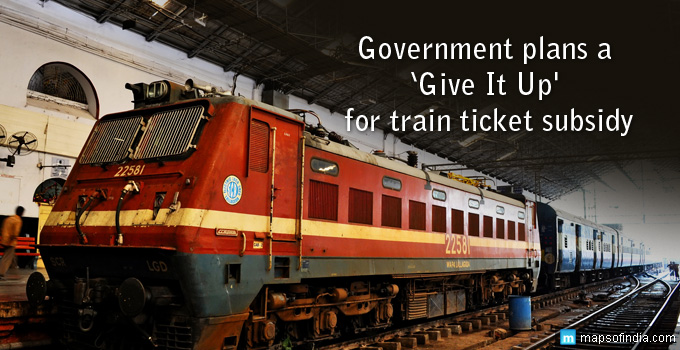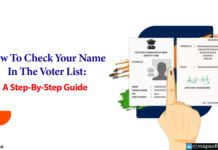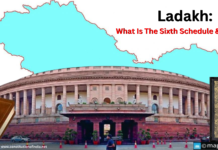After the success of the “Give-It-Up” campaign on LPG subsidy, the government of India is planning to implement a “Give-It-Up” campaign for railway fares. This will allow passengers to give up the subsidy on railway tickets voluntarily just like the way customers could give back the cooking gas subsidy. Though the exact date of implementation has not yet been announced officially, news reports have indicated that most likely the “Give-It-Up” scheme will be launched by July 2017.
Two slabs for subsidy surrender
The Railway ministry has decided on two slabs for the subsidy surrender scheme: 50% and 100% of the subsidy amount.
Why is it necessary?
The reason for initiating this scheme is to bear the losses that railways suffer every year due to subsidizing the passenger fares. At present, about 43% of the cost of all rail fares is borne by the Indian Railways, despite the fact that it incurs a loss of about Rs 30,000 crores every year.
The biggest loss on the railways exchequer is due to subsidy given to passengers on the suburban travel segment. Suburban passengers pay only 36% of the ticket cost, which is much cheaper when compared to regular bus fares. The rest of the amount is paid by the Indian Railways, which accounts for 60% of the annual subsidy amount.
How will it be implemented?
Railway fare surrender subsidy scheme, better known as the “Give-It-Up” option, will be available for tickets which are booked online or which are purchased from counters.
To make railway passengers know the subsidy burden on the ticket fare, the railways have printed the following statement on the computerized ticket.
“Indian Railways recovers only 57% of cost of travel on an average”
In the face of huge subsidy burden, dynamic fare rates have already been introduced in the elite trains like as Shatabdi, Duronto and Rajdhani Express in September 2016. This is referred as the flexi-fare system. Under it, the prices of these three express trains increase as soon as 10% of the tickets are sold. The ticket rates rise 10% with every 10% of seats/berths that get booked. This means that if 30% of the tickets are sold, then the cost of the tickets will be 30% more.
At present, Indian Railways is in the process of revamping its accounting system, and it will introduce the subsidy scheme in all trains in a phased manner.
Rough estimates of ticket fares
Though the exact subsidy rates have not yet been decided, sources have given a rough estimate of ticket rates of a superfast train, say, the Golden Temple Express travelling from Delhi to Mumbai as follows:
| Type of Ticket | Actual rate (Rs) | Rate after giving up subsidy (Rs) |
| 3 AC | 1570 | 2750 |
| 2 AC | 2275 | 3990 |
To sum up: Under the LPG surrender scheme, over 1 crore cooking gas subscribers had given up their subsidy amount on the appeal of Prime Minister Narendra Modi. Rail fare “Give it Up” campaign will be launched with the hope of covering a considerable amount of losses incurred by the railways through tickets subsidies.





